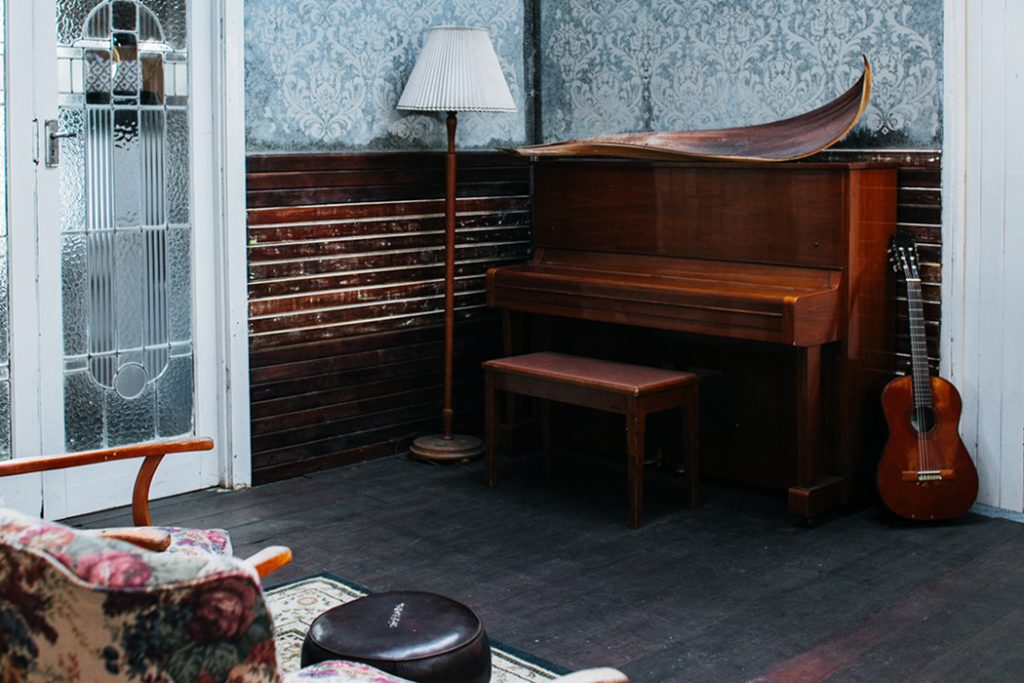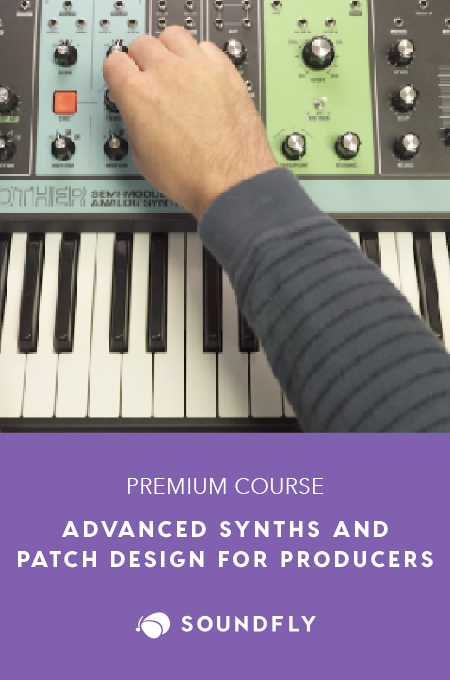+ Take your modern jazz piano and hip-hop beat making to new heights with Soundfly’s new course, Elijah Fox: Impressionist Piano & Production!
Just face it: playing the piano is awesome. Recording piano is also awesome, but it can be tricky. With all the amazing piano VSTs and soft synths out there now, it’s tempting to not even care to try.
But recording a piano, especially an oddball piano — one with personality, history, and some agreeable wear-and-tear — now that can be super rewarding!
And let’s be honest, getting into a studio with a real grand can be fabulous, but those can be difficult and expensive to access. Many of us have crazy random pianos at home and in smaller studios, though. As Sampha so eloquently sings, “no one knows me like the piano in my mother’s home.” He’s right!
So, let’s talk about how to get a decent signal on some of those crazy pianos, and how you might go about recording them right at home where you feel most comfortable playing.
The Grand Piano
Let’s give the grand a little love first. Yes, they can be hard to access, but in case you do, a grand is your best bet for epic, beautiful, cinematic recordings. One of the great things about recording a grand piano directly as opposed to using a soft synth is the sheer thick richness of the recording.
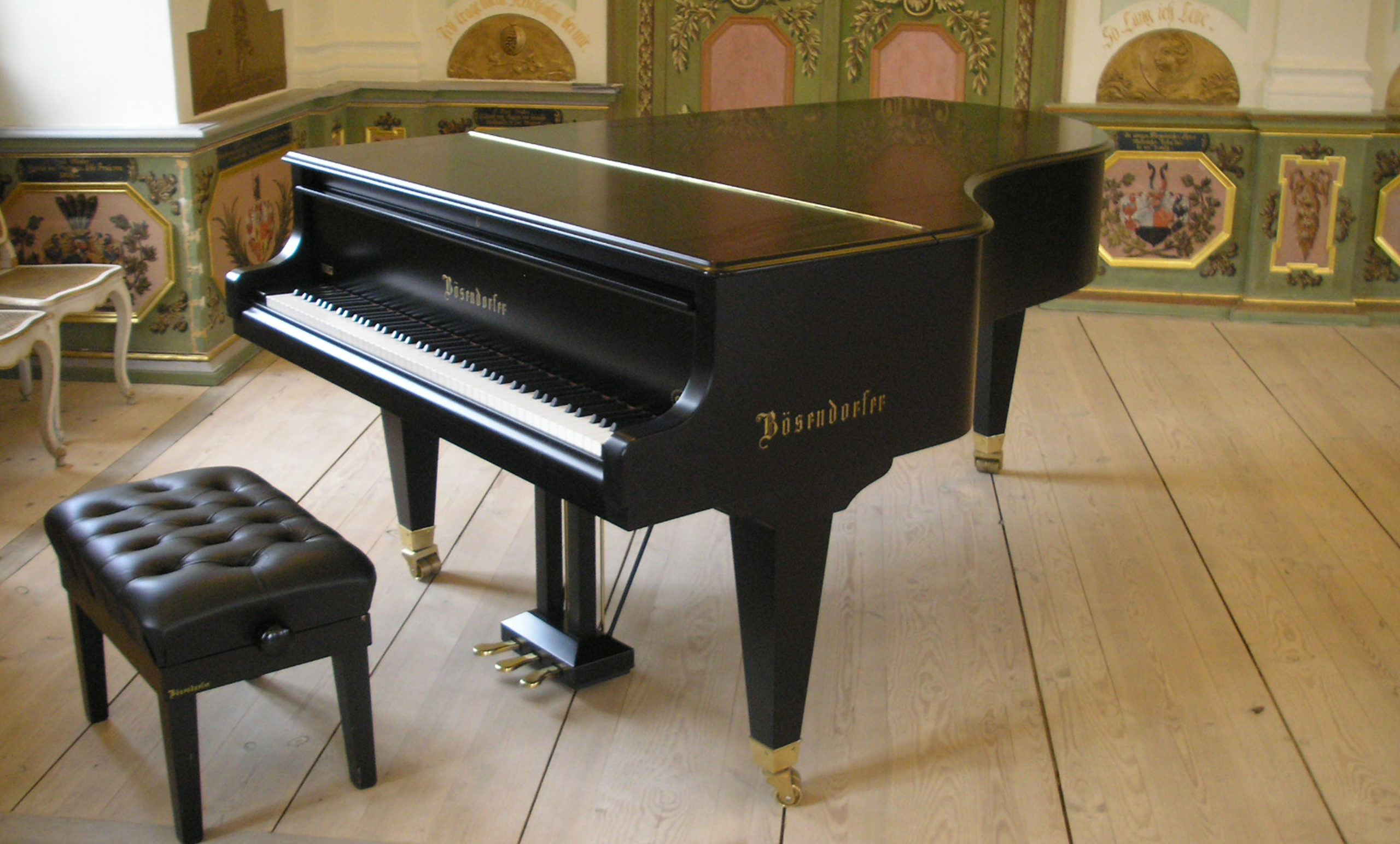
There are a million ways to record a grand piano, but as a starting point, think large diaphragm condenser microphones in a matched stereo pair. A typical set up is a spaced pair placed just above the rim of the piano with an open lid. Experiment with cardioid, figure 8, and omni settings, especially if the room sounds cool. (*Here’s a primer on microphones if you need one.)
You can also try placing the mics deep inside the piano, with one emphasizing the low strings and one the high. In addition, try a placement three or four feet into the room. This will yield a more spacious sound typical of classical recordings — and you can always mix the two together, as long as you take care of phasing issues that may arise due to the distance between the mics.
Or, and this can be amazing, try a mid-side pair placed somewhere inside under the lid. Ribbon mics can be beautiful in this arrangement.
Your Grandma’s 115-Year-Old Upright
Now that we’ve got that covered, let’s get to what what this article is really about. How to get something cool from any old, crazy, crapola, amazing, beater of a piano you find stuffed in an attic or gathering black widows in your aunt Bertha’s garage.
Or even just the relatively meh practice upright you’ve got in your living room, because hey, you’re a musician, baby!
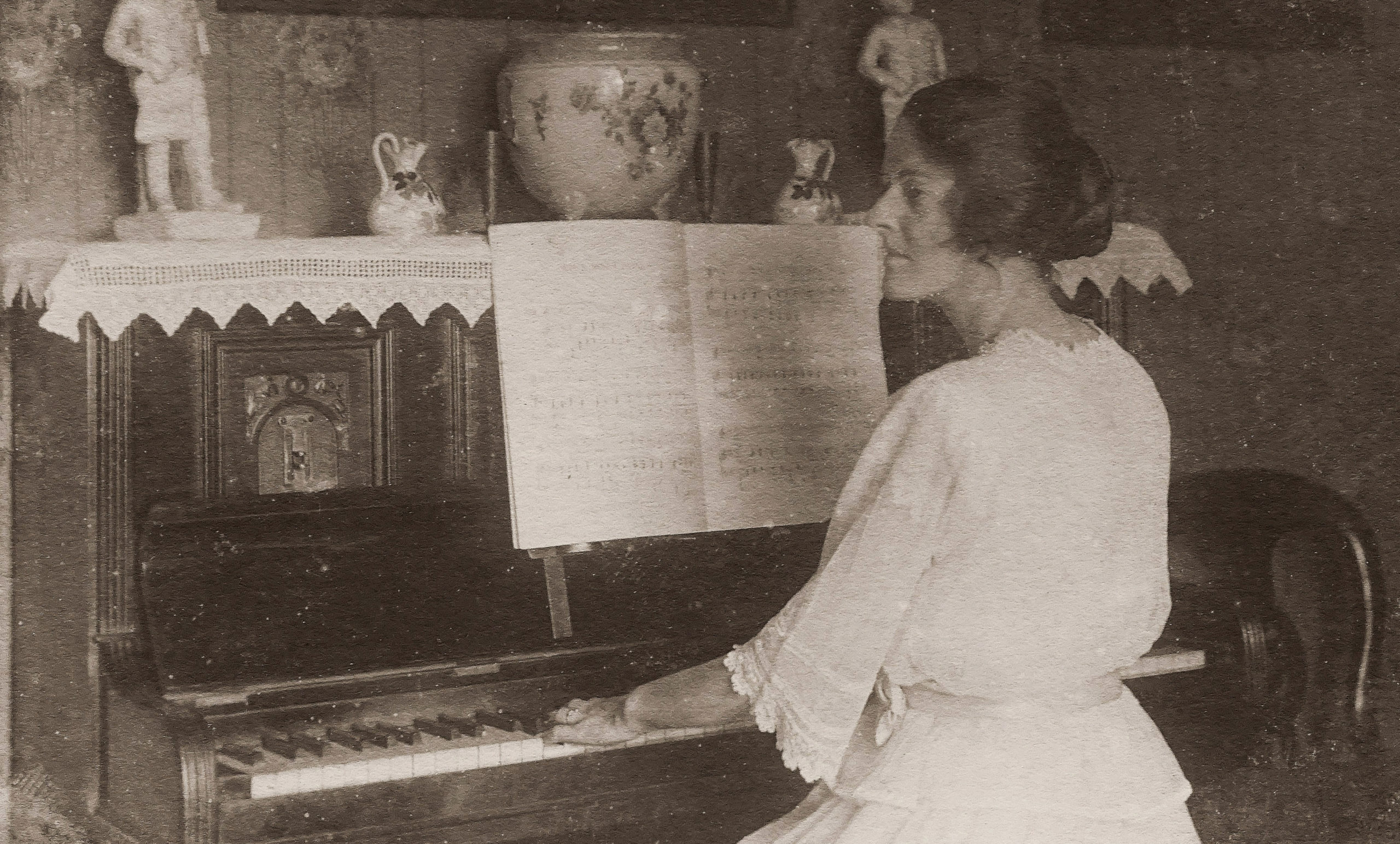
Quick piece of advice: Experiment. Everything here applies to any kind of piano, whether or not it sounds “good.”
1. Let it sing the way it wants to sing…
A crazy old behemoth is never going to sound like a nine-foot Steinway grand piano. So don’t use it that way. Instead, play around with it until you strike upon a sound that’s not repeatable. Something that causes you to write a riff specifically for that piano. Something that would be ruined by a super clean shiny grand piano in a studio because it sounds too clean. Something you just have to capture; right now.
2. Now listen back.
Ok now that you’ve got that riff going, listen closely to what makes it cool. Is it super dark? Jangly? Is there a broken string going “twang twang?” If you can, have another person play that riff and walk around the room. See if there’s a place in the room where it sounds extra great.
3. Mic it up with various placements.
Now that we have a beat on what’s cool, we can get a sense of what to emphasize. Now it’s just a matter of mics and placements. If you’ve got the mics and the channels, you can try several placements at once and then compare them in the studio later.
Some possibilities that are typical for upright pianos include a wide spaced pair of small diaphragm condensers placed about a foot above the ground, pointed at the front (under your feet). Try close placement, a couple feet away, and back in the room. If you can take the panel off the bottom, you’ll probably get a brighter sound — good for emphasizing jangle and twangs or lightening it up if it’s too dark.
If that doesn’t work, the same pair placed about head height might work. Again, try various distances, and if you can, remove the top panel. A pair just around the player’s head may work to capture what you were hearing when you discovered the riff. Large diaphragm condensers might work better, but beware, you may or may not recreate your in-the-room experience this way.
Some old pianos have a lid that opens — that might help brighten the sound, or you may be able to stick a couple mics right under the lid. If the lid only opens slightly, this might yield a strange sound which could work — or not!
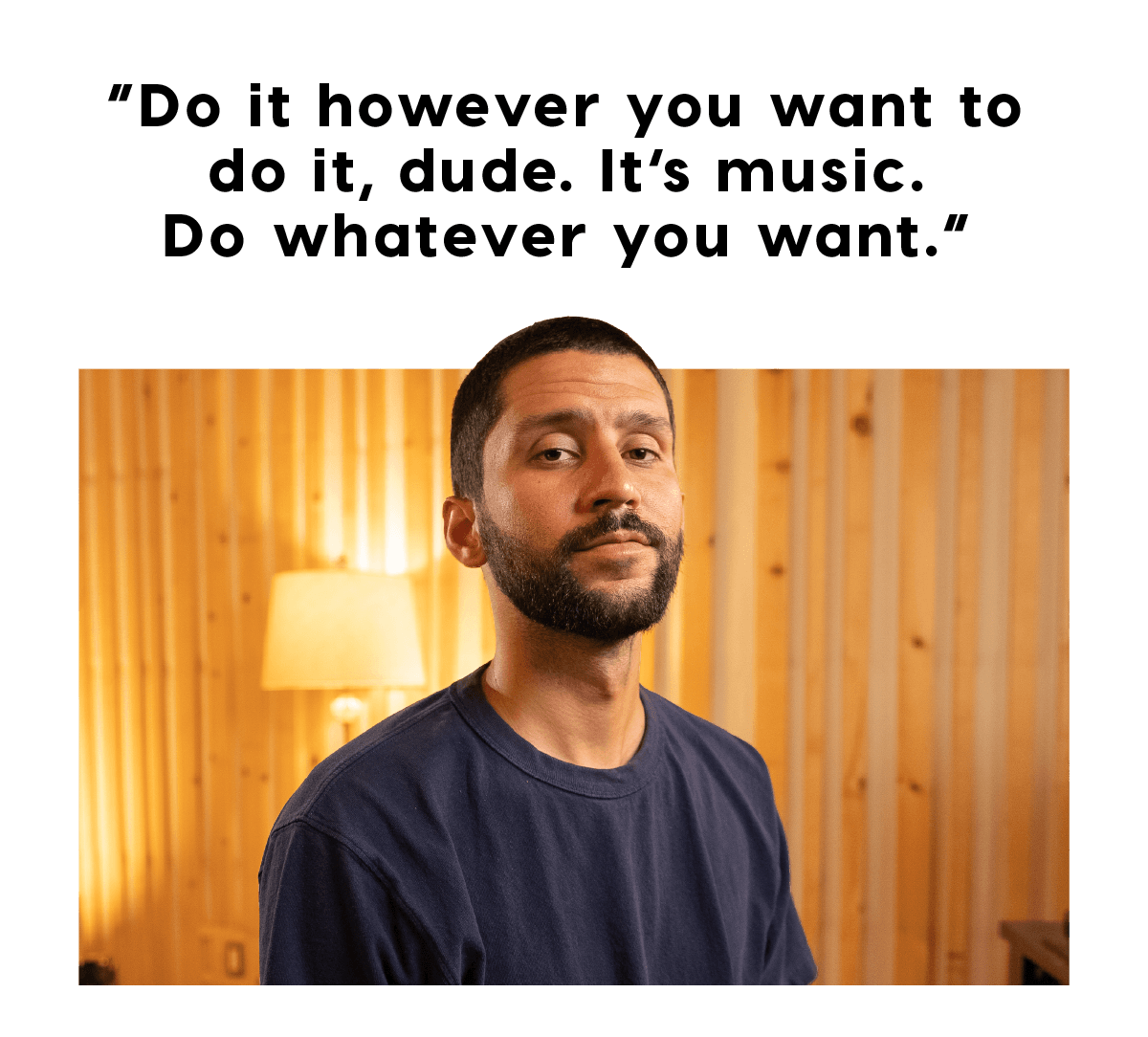
If none of that is working, you might try pulling the piano away from the wall and miking it from the back. Again, a spaced pair is the go-to here, but another configuration might work.
+ Read more on Flypaper: “A Quick Introduction to Common Mic Placement Techniques.”
4. Try it in mono.
You may not need to get a nice wide stereo recording. Instead, it might be better to try one mic — even a dynamic mic, which will be less detailed, to capture a nice, wonky, dirty sound. Especially for low end parts, this might even be better. Try getting inside and getting really close to the strings. If you’re able to access the hammers, you may be able to capture something super percussive by being right next to them.
5. Use the room.
Maybe the coolness you’re hearing is more about the room than the direct piano. If so, a pair of room mics placed as far away as possible might be best, especially if the riff is really ethereal and legato. Don’t be afraid to try miking the floor, or the corner by the ceiling — get crazy.
Go Ahead, Break the Rules
Here’s the epic summary: there are no rules. With how that piano wants to sound or how you should go ahead and record it. Just experiment, and lean into the uniqueness of what comes out of it. You never know which placement is going to yield the coolest result.
Secondly, you don’t necessarily need to play an odd piano the way you’d play a perfectly tuned grand. Be weird. Pluck the strings. Drum on the side. Dampen the strings with felt. Play a rhythm line with the sustain pedal. Again, experiment.
Piano recording can be straightforward in a great studio, but it might not be as inspiring and fun as messing with some random piano somewhere. So, embrace the journey!
Don’t stop here!
Continue learning with hundreds of lessons on songwriting, mixing, recording and production, composing, beat making, and more on Soundfly, with artist-led courses by Kimbra, Com Truise, Jlin, Ryan Lott, and the acclaimed Kiefer: Keys, Chords, & Beats.
